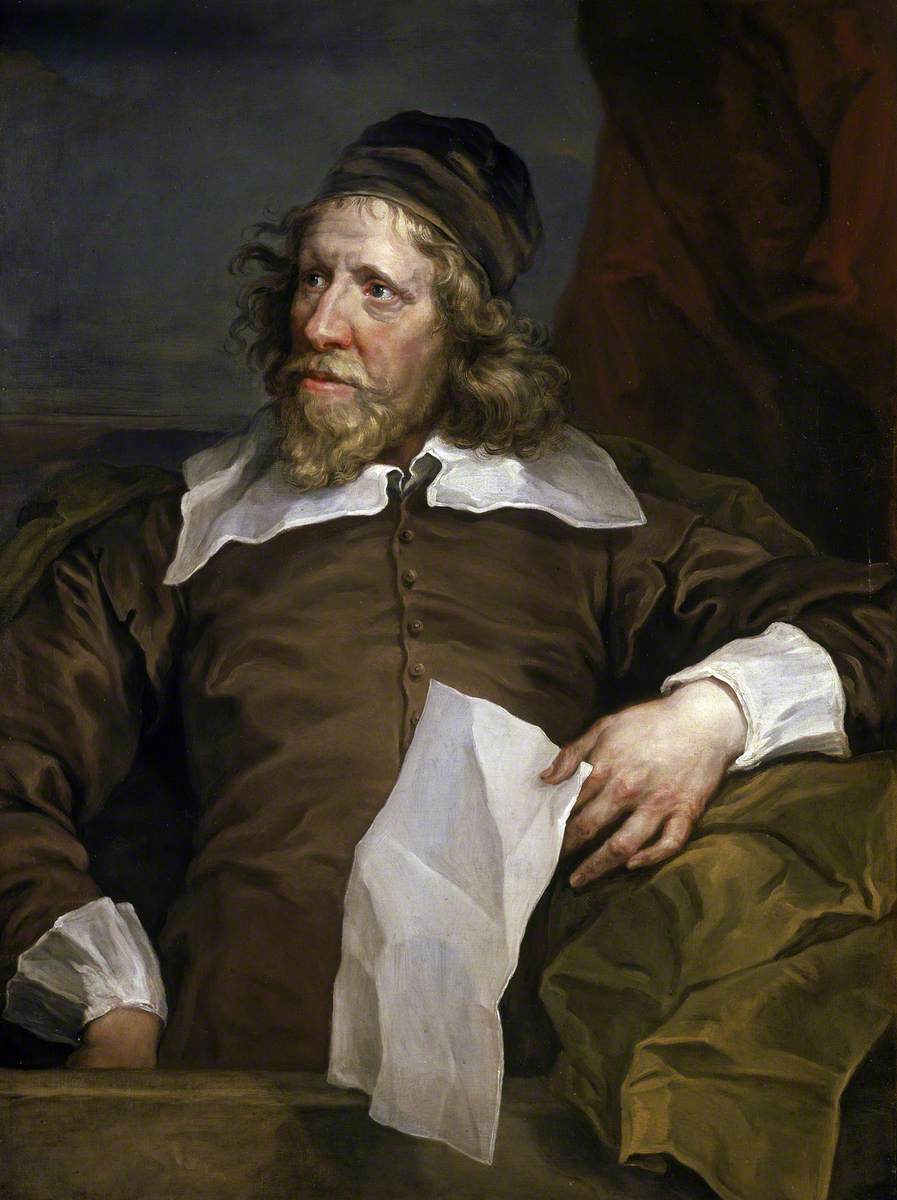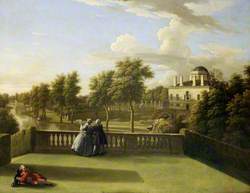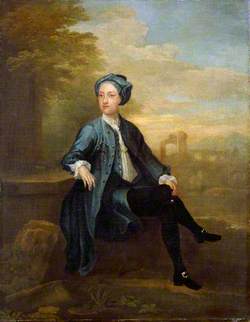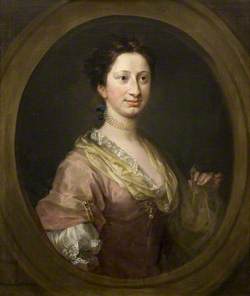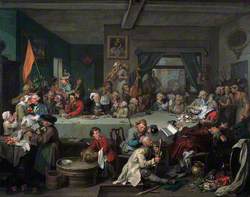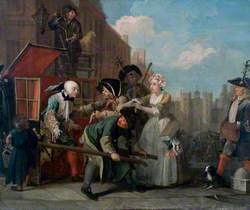How you can use this image
This image can be used for non-commercial research or private study purposes, and other UK exceptions to copyright permitted to users based in the United Kingdom under the Copyright, Designs and Patents Act 1988, as amended and revised. Any other type of use will need to be cleared with the rights holder(s).
Review the copyright credit lines that are located underneath the image, as these indicate who manages the copyright (©) within the artwork, and the photographic rights within the image.
The collection that owns the artwork may have more information on their own website about permitted uses and image licensing options.
Review our guidance pages which explain how you can reuse images, how to credit an image and how to find images in the public domain or with a Creative Commons licence available.
Notes
Add or edit a note on this artwork that only you can see. You can find notes again by going to the ‘Notes’ section of your account.
A half-length portrait to left, with the sitter wearing a brown coat, large plain white collar and cuffs, a brown skull-cap and holding a paper in his left hand. It was commissioned in 1757 by Sir Edward Littleton, MP, when he was refurbishing his mansion, Teddesley Hall in Staffordshire, and collecting portraits of 'British worthies' for its decoration. Hogarth was commissioned to paint Jones from a well known print by Robert van der Voerst, after a red chalk drawing by van Dyck now at Chatsworth. The print and Hogarth's portrait are a reversed image of the drawing, which itself relates to van Dyck's rather simpler oil portrait of Jones, now in the Hermitage collection, St Petersburg. Hogarth admired van Dyck's style of portraiture, which he thought had inspired an English tradition, and he aspired to emphasize such continuity.
Inigo Jones was celebrated as a designer of entertainments for the courts of James I and Charles I but his posthumous reputation is based on his architectural work. He was one of the first Englishmen to make a detailed study of the buildings of ancient Rome and of the works of the Italian Renaissance architects, particularly Andrea Palladio. Having been Surveyor to Henry, Prince of Wales from 1610 to 1612, he became Surveyor-General to his father, James I, in 1615 and (from 1625) to Charles I. Jones introduced into England a rigorous interpretation of the classical language of architecture, including the hierarchical use of the architectural orders and their attendant details arranged through the appropriate use of number, measure and proportion. His influence was curtailed by the English Civil War (1642–1649) but he enjoyed a great revival among Palladian architects of the eighteenth century. Of his own work, the Queen's House at Greenwich and the Banqueting House, Whitehall, are the major surviving examples.
Title
Inigo Jones (1573–1652)
Date
1757–1758
Medium
oil on canvas
Measurements
H 91.5 x W 71 cm
Accession number
BHC2810
Work type
Painting
